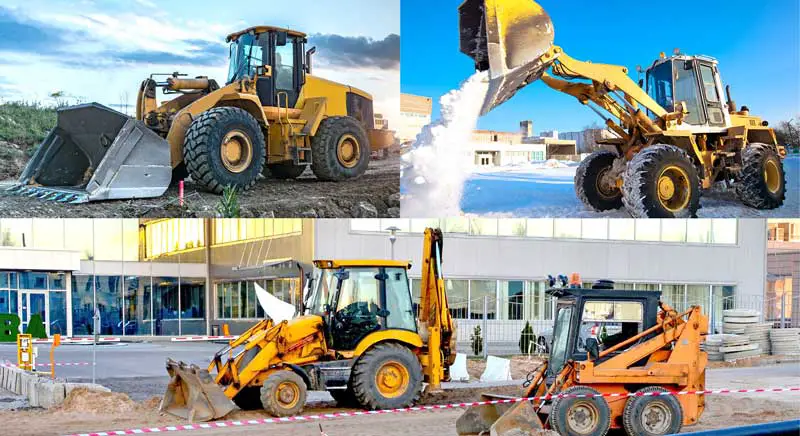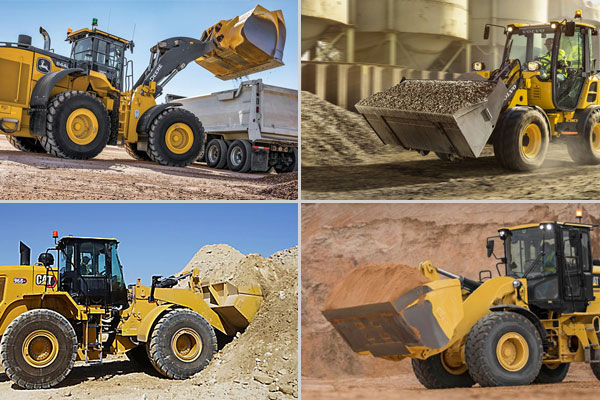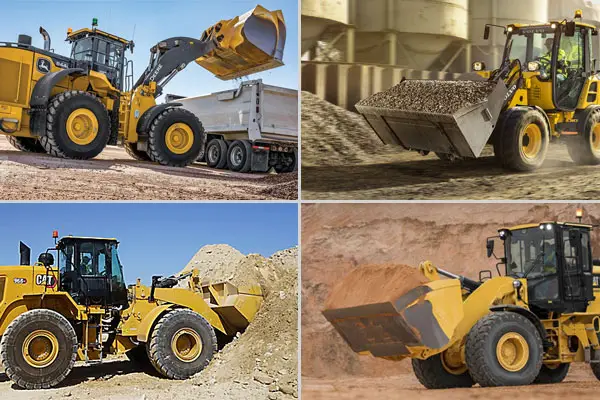This post may contain affiliate links which means I may receive a commission for purchases made through links. Learn more on my Private Policy page.
You’re about to embark on a fascinating journey into the world of loaders. In this article, we’ll uncover the various types of loaders and explore their intriguing uses. Whether you’re a construction enthusiast, a warehouse aficionado, or just curious about heavy machinery, get ready to discover the incredible versatility and importance of loaders in a wide range of industries.

This image is property of acropolis-wp-content-uploads.s3.us-west-1.amazonaws.com.
1. Introduction
Loaders are heavy machinery used in various industries for material handling and moving tasks. They play a crucial role in construction, agriculture, industrial, and other sectors where the need for efficient and powerful equipment is paramount. Loaders come in different types, each designed to excel in specific applications. In this article, we will explore the various types of loaders, their features, uses, and safety considerations to help you understand the capabilities and importance of these versatile machines.
2. Front-End Loaders
2.1 Skid Steer Loaders
Skid steer loaders are compact and maneuverable machines that excel in tight spaces and rough terrains. They feature a small body and a rigid frame with four wheels, allowing them to turn within their own footprint. Skid steer loaders are equipped with a bucket attachment in the front, which can be used for loading, scooping, and moving various materials such as dirt, gravel, and debris. They are commonly used in landscaping, construction, and agriculture for tasks like excavation, snow removal, and material transportation.
2.2 Compact Track Loaders
Compact track loaders, also known as multi-terrain loaders, are similar to skid steer loaders but feature tracks instead of wheels. These tracks provide better traction and stability, making them ideal for working on soft or uneven surfaces. Compact track loaders are commonly used in construction sites, especially for tasks that require traveling over rough terrain or delicate surfaces, such as landscaping and grading. They are also equipped with a bucket attachment for material handling.
2.3 Backhoe Loaders
Backhoe loaders are versatile machines that combine the capabilities of both loaders and excavators. They feature a loader attachment in the front and a digging arm, known as a backhoe, at the rear. The loader attachment can be used for loading and material handling, while the backhoe is designed for excavation and digging tasks. Backhoe loaders are widely used in construction, particularly for digging trenches, loading materials, and performing light excavation work.
2.4 Wheel Loaders
Wheel loaders, also called front-end loaders, are large and powerful machines designed for heavy-duty applications. They have a wide bucket attachment at the front and are equipped with either four or six tires, providing stability and traction on various surfaces. Wheel loaders are commonly used in mining, construction, and waste management industries. Their robust design and high lifting capacity make them suitable for tasks such as loading and transporting heavy materials, like rocks, sand, and debris.
3. Agricultural Loaders
3.1 Tractor Loaders
Tractor loaders are specifically designed to be used with tractors. They are hydraulic-powered attachments that are attached to the front or rear of a tractor. Tractor loaders are commonly used in agriculture for tasks such as loading and unloading hay bales, moving feed, and clearing fields. They offer enhanced maneuverability and versatility, allowing farmers to efficiently handle various materials and perform essential tasks on their farms.
3.2 Telehandlers
Telehandlers, also known as telescopic handlers or teleporters, are agricultural loaders equipped with a telescopic boom. This boom can extend and retract, providing increased reach and lifting height. Telehandlers are versatile machines used in agriculture for tasks like lifting and stacking hay bales, loading and unloading goods, and handling materials on uneven terrain. They offer the advantage of extended reach, making them invaluable in farming operations that require flexibility and precision.
3.3 Self-Propelled Loaders
Self-propelled loaders, commonly referred to as self-propelled forage harvesters or self-loading wagons, are agricultural machines specifically designed to harvest and collect crops, such as grass and maize silage. These loaders are equipped with a cutting mechanism at the front that cuts the crops, while a conveyor system transports them into a storage container at the rear. Self-propelled loaders are widely used in the dairy and livestock industry, enabling farmers to efficiently collect and store fodder for their animals.
4. Industrial Loaders
4.1 Forklifts
Forklifts are industrial loaders primarily used for lifting and moving heavy loads within warehouses, construction sites, and logistics facilities. They feature forks at the front that can be raised and lowered to lift and transport pallets, boxes, and other heavy objects. Forklifts come in various configurations, including electric, diesel, and propane-powered, allowing them to be used in different environments. Their versatility and load-bearing capacity make them essential for efficient material handling in industrial settings.
4.2 Reach Stackers
Reach stackers are specialized industrial loaders used in shipping ports and container terminals. They are designed to handle and stack shipping containers, allowing for efficient loading and unloading of goods from ships, trains, and trucks. Reach stackers have telescopic booms that can extend and retract, enabling them to reach and lift containers with precision. Their ability to handle heavy loads and stack containers in tight spaces makes them crucial in streamlining port operations and maximizing storage capacity.
4.3 Wheel Loaders
Wheel loaders, as mentioned earlier, are also commonly used in industrial settings. Their versatility and robust design make them suitable for various material handling tasks, such as loading and transporting heavy materials within construction sites, waste management facilities, and mining operations. Wheel loaders in the industrial sector are typically larger and more powerful than their counterparts used in other industries, owing to the demanding nature of the tasks they are involved in.
4.4 Telescopic Handlers
Telescopic handlers, also known as telehandlers, have applications in both agriculture and industry. In an industrial context, telehandlers are used for lifting and maneuvering heavy loads, similar to forklifts. However, what sets them apart is their telescopic boom, which allows for increased reach and height, enabling them to access hard-to-reach areas. The versatility of telehandlers makes them valuable for various tasks, including material handling, construction, and maintenance operations.

This image is property of acropolis-wp-content-uploads.s3.us-west-1.amazonaws.com.
5. Construction Loaders
5.1 Skid Steer Loaders
Skid steer loaders, mentioned earlier in the front-end loader section, are widely used in the construction industry due to their compact size and maneuverability. Their ability to turn within their own footprint makes them ideal for working in confined spaces, such as residential areas or interior renovation projects. Skid steer loaders can be equipped with various attachments, including buckets, pallet forks, and augers, making them versatile machines capable of performing a wide range of construction tasks.
5.2 Wheel Loaders
Wheel loaders, also previously discussed in the front-end loader section, have significant applications in the construction industry. Their large size, high lifting capacity, and robust construction make them suitable for heavy-duty construction tasks such as digging, loading, and transporting large amounts of materials. Wheel loaders are often seen on construction sites, contributing to tasks like moving soil, sand, rocks, and construction debris.
5.3 Backhoe Loaders
Backhoe loaders, mentioned earlier in the front-end loader section, are specifically designed for construction purposes. They excel in tasks that require both front-end loading and digging capabilities. Backhoe loaders are commonly used for excavation work, such as digging trenches, foundations, and ditches. Their versatility and ability to switch between loading and excavation make them a valuable asset on construction sites.
5.4 Track Loaders
Track loaders, or compact track loaders, operate similarly to skid steer loaders but with the advantage of track instead of wheel propulsion. They provide enhanced traction and stability, making them suitable for construction tasks that involve working on soft, uneven, or delicate surfaces. Track loaders are often used in construction projects like landscaping, grading, and site preparation, where minimal ground disturbance is crucial.
6. Mini Loaders
6.1 Mini Skid Steer Loaders
Mini skid steer loaders, also referred to as compact skid steer loaders, are downsized versions of their larger counterparts. They offer similar capabilities but are designed for smaller scale applications where maneuverability and accessibility are essential. Mini skid steer loaders are commonly used in residential construction, landscaping, and small-scale excavation projects.
6.2 Compact Wheel Loaders
Compact wheel loaders are smaller and more agile versions of conventional wheel loaders. They are designed for tasks that require the power and versatility of a wheel loader but in limited space environments. Compact wheel loaders are used in various applications, including construction, landscaping, and agriculture, where maneuverability is crucial, and space is limited.

This image is property of d9z1tpn605xsl.cloudfront.net.
7. Features and Uses of Loaders
7.1 Bucket
The bucket is a crucial attachment on loaders that allows them to handle and transport various materials. The size and shape of the bucket can vary depending on the loader type and application. Loaders with larger buckets are suitable for moving large volumes of loose materials like soil, sand, and gravel, while loaders with smaller buckets excel in tasks that require precision and maneuverability, such as loading pallets or bales.
7.2 Lift Capacity
The lift capacity of a loader refers to the maximum weight it can safely lift and transport. Loaders come with different lift capacities, ranging from a few hundred pounds to several tons. Understanding the lift capacity is essential to ensure safe operation and prevent overloading, which can lead to accidents or damage to the machine and the load being lifted.
7.3 Versatility
One of the key features of loaders is their versatility. They can be equipped with various attachments, including buckets, forks, grapples, and augers, to perform different tasks. This versatility allows loaders to adapt to different industries and applications, making them highly valuable and cost-effective machines. The ability to quickly switch attachments enhances the efficiency and productivity of loaders, as they can be used for multiple purposes within a given project.
7.4 Ergonomics
Loaders are designed with ergonomics in mind to ensure operator comfort and safety. Features such as adjustable seats, ergonomic controls, and panoramic views enable operators to work in a comfortable and efficient manner. A well-designed ergonomic cabin reduces fatigue and enhances productivity during long working hours.
7.5 Attachments
Loaders can be equipped with a wide range of attachments, allowing them to perform specific tasks with precision and efficiency. Common attachments include buckets, forks, grapples, brooms, snow blowers, and more. Each attachment serves a specific purpose, enabling loaders to adapt to various industries and applications. The ease of attachment swapping makes loaders versatile machines that can tackle different tasks efficiently.
8. Safety Considerations
8.1 Operator Training
Proper operator training is crucial for safe and efficient loader operation. Operators should undergo comprehensive training to understand equipment controls, safety protocols, and best practices. Training should cover topics such as load capacity, stability, maneuvering techniques, and safe operating procedures. Regular refresher courses and certifications ensure that operators remain knowledgeable and up-to-date with the latest safety standards.
8.2 Maintenance
Regular maintenance is essential to ensure loaders are in optimal working condition and to prevent equipment failure or accidents. Maintenance tasks include regular inspections, lubrication, filter replacement, and addressing any mechanical issues promptly. Following the manufacturer’s maintenance guidelines and schedules is crucial to extend the lifespan of the loader and maintain its safety and efficiency.
8.3 Operational Guidelines
Adhering to safe operational guidelines is essential to prevent accidents and maintain a safe working environment. This includes wearing appropriate personal protective equipment (PPE), following all safety signage and signals, operating within load capacity limits, and avoiding unsafe practices such as overloading or improper use of attachments. Operators should also be aware of their surroundings, communicate effectively with coworkers, and follow all applicable safety regulations.

This image is property of acropolis-wp-content-uploads.s3.us-west-1.amazonaws.com.
9. Maintenance and Repair
9.1 Regular Inspections
Regular inspections of loaders are necessary to identify any mechanical issues, leaks, or damage that may affect their operation. Inspections should cover the entire machine, including the engine, hydraulics, tires/tracks, and attachments. Any signs of wear, loose components, or abnormalities should be addressed promptly to prevent further damage or accidents.
9.2 Lubrication
Proper lubrication is essential for the smooth operation of loaders. Regular greasing of pivot points, bearings, and other moving parts helps reduce friction and wear. Following the manufacturer’s lubrication guidelines and schedules ensures that loaders remain in good working condition.
9.3 Filter Replacement
Regular replacement of filters, such as air, oil, and fuel filters, is necessary to keep loaders running efficiently. Clean filters prevent contaminants from entering the engine and hydraulic system, improving performance and extending the lifespan of critical components.
9.4 Common Repairs
Loaders may require occasional repairs due to wear and tear or mechanical issues. Common repairs include hydraulic system repairs, engine maintenance, tire or track replacement, and electrical system troubleshooting. It is recommended to have a qualified technician perform repairs to ensure proper diagnosis and resolution of the issue.
10. Conclusion
Loaders are indispensable machines in various industries, providing efficient and powerful solutions for material handling and moving tasks. We have explored the different types of loaders, including front-end loaders, agricultural loaders, industrial loaders, construction loaders, and mini loaders, each with its specific features and uses. Understanding the various loader types and their capabilities is crucial to ensure optimal equipment selection for specific applications.
Additionally, recognizing the importance of features such as buckets, lift capacity, versatility, ergonomics, and attachments allows operators to make the most of loaders, enhancing productivity and efficiency. Safety considerations, including operator training, maintenance, and adherence to operational guidelines, are paramount to prevent accidents and maintain a safe working environment.
Regular maintenance and prompt repair of loaders help maximize their lifespan and ensure reliable performance. Loaders are essential machinery that contributes to the success of numerous industries, and understanding their capabilities, features, and safety requirements is key to utilizing them effectively and safely.

This image is property of constrofacilitator.com.
This post may contain affiliate links which means I may receive a commission for purchases made through links. Learn more on my Private Policy page.

